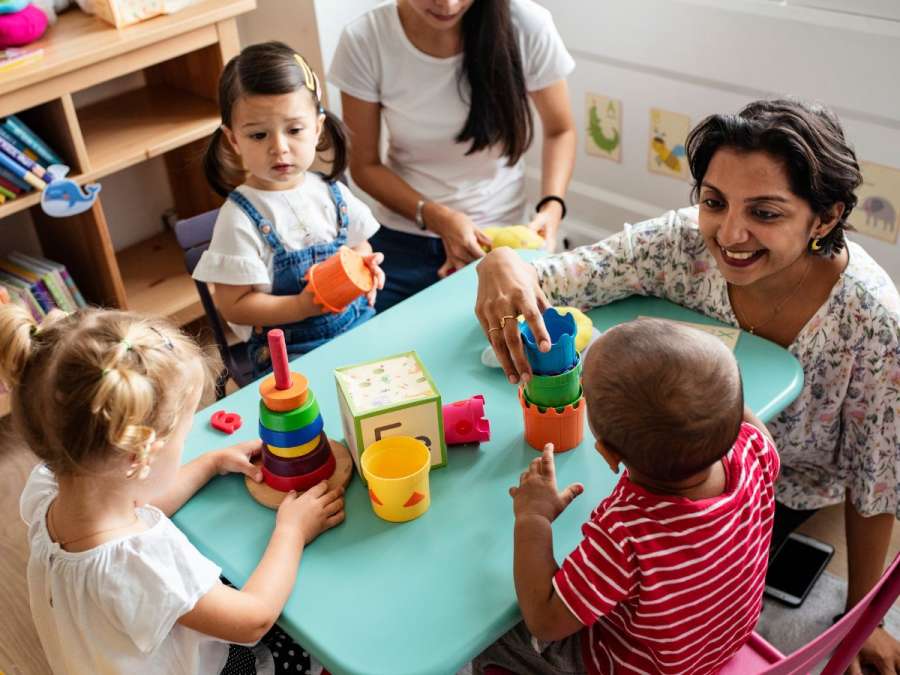Setting boundaries and expectations is a crucial aspect of toddler parenting. This article looks at establishing clear boundaries and expectations for toddlers, and building a positive and healthy developmental environment.
Toddlers are in rapid growth and development, characterized by their curiosity, energy, and emerging sense of independence. As they explore the world around them, setting clear boundaries and expectations becomes a fundamental aspect of parenting. Establishing these guidelines offers structure and security for toddlers. It helps them understand their place in the world and builds healthy social and emotional development. In this guide, we will look into the art of setting boundaries and expectations in toddlers. We will also offer insights into why they are essential, strategies for implementation, and the long-term benefits of nurturing a secure environment for your baby.
1. The Significance of Boundaries for Toddlers
a. Creating a Sense of Security
Setting boundaries provides toddlers with a sense of security. Clear limits help them understand the world around them and establish a framework for safe exploration. This sense of predictability contributes to emotional well-being and lays the foundation for healthy attachment.
b. Teaching Self-Regulation and Discipline

Boundaries play an essential role in teaching toddlers self-regulation, and discipline. Toddlers learn to manage their impulses and emotions by knowing their expectations. Consistent enforcement of boundaries builds the development of essential skills for navigating social situations and forming positive relationships.
2. Establishing Clear and Consistent Boundaries
a. Clarity in Communication
Effective boundary-setting begins with clear communication. Toddlers are more likely to understand and respect boundaries when communication is done in simple, age-appropriate language. Consistency in communication ensures that expectations remain clear, reducing confusion and frustration for toddlers.
b. Avoiding Ambiguity and Mixed Messages

Ambiguity and mixed messages can lead to confusion for toddlers. Consistent enforcement of established boundaries prevents misunderstandings and provides toddlers with a reliable framework for behaviour. When boundaries are clear and consistently applied, toddlers feel secure and are more likely to internalize expectations.
3. Tailoring Boundaries to Individual Development
a. Recognizing Individual Differences
Every toddler is unique, and caregivers should tailor setting boundaries according to each child’s development. Understanding a toddler’s temperament, preferences, and developmental stage allows parents to create boundaries that align with the child’s needs, building a positive and supportive environment.
b. Adjusting Boundaries as Toddlers Grow

As toddlers grow and develop, their understanding of the world evolves. Adjusting boundaries to match their increasing capabilities is essential. What may have been a suitable boundary for a younger toddler may need modification as they acquire new skills and demonstrate increased cognitive abilities.
4. The Role of Consistent Expectations in Toddlers
a. Building Trust and Predictability
Consistent expectations contribute to the building of trust between toddlers and caregivers. When toddlers can predict how their caregivers respond to their actions, they develop a sense of security. This predictability builds trust and encourages positive behaviour as toddlers understand the consequences of their actions.
b. Preventing Power Struggles

Consistent expectations help prevent power struggles between toddlers and caregivers. When expectations remain steady, toddlers are less likely to test limits or engage in challenging behaviour to gauge reactions. This proactive approach reduces conflicts and encourages a more harmonious parent-toddler relationship.
5. Communicating Expectations Effectively
a. Positive Language and Reinforcement
Communicating expectations positively enhances the likelihood of compliance. Using positive language and reinforcing good behaviour with praise or rewards creates a positive association with following expectations. This positive reinforcement motivates toddlers to repeat desired behaviours.
b. Setting Realistic and Age-Appropriate Expectations

Expectations should be realistic and tailored to a toddler’s developmental stage. Setting age-appropriate expectations acknowledges the limitations and capabilities of toddlers, reducing frustration and setting the stage for successful compliance. Realistic expectations promote a positive environment for both toddlers and caregivers.
6. Nurturing Independence within Set Boundaries
a. Encouraging Age-Appropriate Autonomy
Setting boundaries does not mean stifling a toddler’s natural desire for independence. Within established limits, encouraging age-appropriate independence builds a sense of competence and self-esteem. Allowing toddlers to make choices within defined parameters promotes their confidence and decision-making skills.
b. Balancing Freedom with Safety

Balancing freedom with safety is crucial in nurturing a toddler’s independence. Setting boundaries that allow for exploration while ensuring a safe environment is a delicate but necessary balance. This approach supports the development of independence while prioritizing the toddler’s well-being.
7. Handling Challenges and Adjusting Strategies
a. Responding to Noncompliance
When toddlers challenge boundaries, responding calmly and consistently is essential. Redirecting their attention, offering choices, or using time-outs are effective strategies. Consistent responses reinforce the importance of boundaries and help toddlers understand the consequences of their actions.
b. Periodic Evaluation and Adjustment

Periodic evaluation of established boundaries is necessary as toddlers grow and circumstances change. Adjusting strategies based on a toddler’s developmental progress and evolving needs ensures that boundaries remain relevant and supportive. Flexibility in approach allows for effective adaptation to changing dynamics.
Setting boundaries and expectations in toddlers is a dynamic and essential aspect of parenting. It establishes a framework for positive development, teaching self-regulation and discipline. By recognizing the significance of clear communication, setting boundaries, and consistent expectations, parents create an environment that nurtures independence and builds a healthy parent-toddler relationship.
